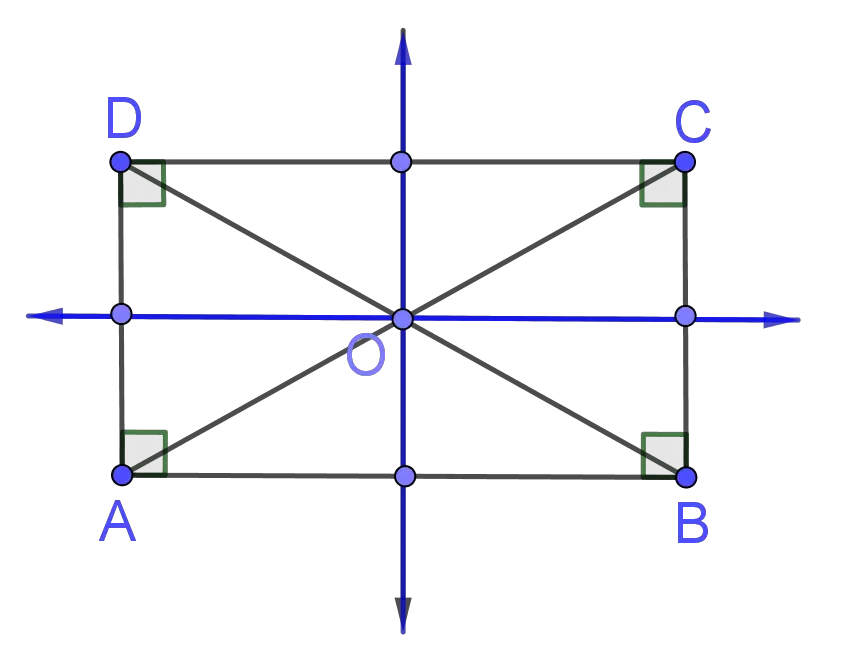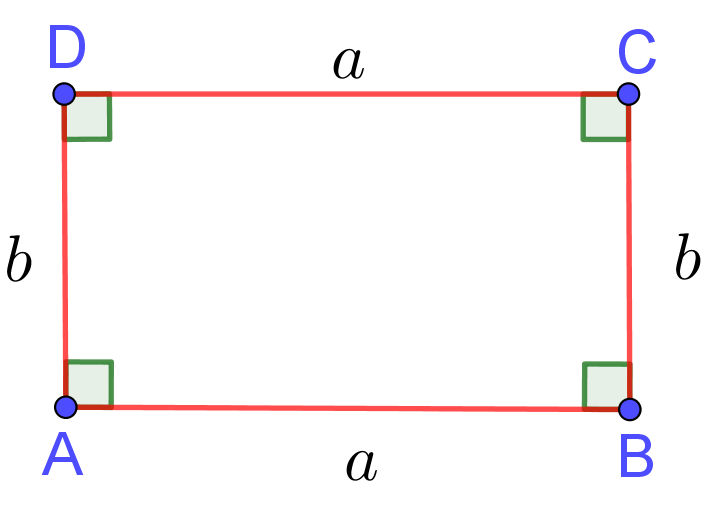How To Find Sides Of Rectangle With Area
Area & Perimeter of a Rectangle computer uses length and width of a rectangle, and calculates the perimeter, area and diagonal length of the rectangle. It is an online Geometry tool requires two length sides of a rectangle. Using this calculator, we will sympathise the algorithm of how to notice the perimeter, expanse and diagonal length of a rectangle.
It is necessary to follow the side by side steps:
- Enter the length and width of a rectangle in the box. These values must be positive real numbers or parameter. Note that the length of a segment is always positive;
- Printing the "GENERATE Piece of work" button to make the ciphering;
- Rectangle calculator volition give the perimeter, area and diagonal length of a rectangle.
Input : Ii positive existent numbers or parameters as the length and width of a rectangle;
Output : Iii positive existent numbers or variables as the perimeter, area and diagonal length of a rectangle and corresponding units later that.

Rectangle Formula :
Perimeter of Rectangle Formula: The perimeter of a rectangle is adamant by the following formula
$$P=2\times a+two\times b=2\times(a+b)$$
where $a$ and $b$ are the length and width of the rectangle, respectively.
Area of Rectangle Formula: The area of a rectangle is adamant by the following formula
$$A=a\times b$$
where $a$ and $b$ are the length and width of the rectangle, respectively.
Length of Diagonal of Rectangle Formula: The diagonal of a rectangle is determined by the following formula
$$d=\sqrt{a^2+b^2}$$
where $a$ and $b$ are the length and width of the rectangle, respectively.
What is Area & Perimeter of Rectangle?
A quadrilateral with 4 congruent angles is a rectangle. The word "rectangle" comes from Latin "rectangulus". It's a combination of "rectus" which means "right" and "angulus" which means "an angle".
If $\angle A\cong\bending B\cong\bending C\cong\bending D$, then ${\overline{ABCD}}$ is a rectangle (meet the movie below). It holds that
$$m\angle A=thou\angle B=chiliad\angle C=1000\angle D=\frac{{360}^o}{4}={90}^o$$

The lengths of its sides are denoted by $a$ and $b$, while the length of the diagonal is denoted with $d$. A rectangle is also called an equiangular quadrilateral, since all of its angles are congruent.
A rectangle is a parallelogram, but parallelogram is not a rectangle considering in a rectangle each angle is a right angle, whereas it is not and so in a parallelogram. That means that all the properties of a parallelogram can be also applied to rectangles. To recall, the parallelogram has the following properties:
- Opposite sides of a parallelogram are congruent;
- Opposite angles of a parallelogram are congruent;
- The consecutive angles of a parallelogram are supplementary to each other;
- The diagonals of a parallelogram bisect each other
Rectangle satisfies one more property:
- The diagonals of a rectangle are congruent;
If nosotros know side lengths of the rectangle, it is easy to calculate the length of the diagonal using the Pythagorean Theorem. A diagonal divides a rectangle into two correct triangles. Past applying the Pythagorean Theorem to $\Delta ABC$, we get
$$d^2={\overline{AB}}^ii+{\overline{BC}}^2=a^2+b^ii$$
i.e.
$$d=\sqrt{a^two+b^two}$$
The rectangle has only two lines of symmetry. These lines are these ones which connect the midpoints of the opposite sides of the rectangle. A rectangle has key symmetry and rotational symmetry. The middle of symmetry is the betoken of intersection of its diagonals, $O$.

The distance around a rectangle is called the perimeter of the rectangle. It is normally denoted by $P$. To find the perimeter of rectangle we add the lengths of its sides. Thus, the perimeter of a rectangle with the length of $a$ and the width of $b$ is
$$P =a+b+a+b= ii \times a+2\times b=2\times(a+b)$$


The area of a rectangle or some other polygon is a number of square units needed to fill the rectangle. The area, usually denoted by $A$, of a rectangle with the length of $a$ and the width of $b$ is
$$A =\mbox{length}\times\mbox{width}=a\times b$$
In other words, the surface area of a rectangle is the product of its length and width.
The perimeter is measured in units such equally centimeters, meters, kilometers, inches, feet, yards, and miles. The area is measured in units units such every bit square centimeters $(cm^ii)$, square meters $(m^2)$, square kilometers $(km^2)$ etc.
The area and perimeter of a rectangle work with steps shows the complete footstep-by-step adding for finding the perimeter, surface area and diagonal length of the rectangle with the length of $five\;in$ and the width of $x \;in$ using the perimeter, surface area and diagonal length formulas. For whatever other values for length and width of rectangle, only supply 2 positive real numbers and click on the GENERATE Work push. The grade schoolhouse students may use this area and perimeter of a rectangle to generate the work, verify the results of perimeter and expanse of two dimensional figures or do their homework bug efficiently.
Existent World Problems Using Surface area & Perimeter of a Rectangle
Computing areas and perimeters of diverse geometrical figures are very useful in real life bug. Rectangles oft appear in real life. For instance, billboards, swimming pools, mobile phones, beds, doors, books. etc. If we need to make a deck along two sides of a swimming pool of rectangular shape, we must utilise the method for finding area of rectangle.
In iii-dimensional geometry, some solids contains rectangular bases. For example, cube, rectangular prism, pyramid, etc. In problems of calculating surface area and volume of these solids we use formula for finding surface area of rectangle.
Rectangle Practice Problems
Practice Problem one:
A rectangular garden is $2$ times long as its broad. If the perimeter of the garden is $48m$, find its area.
Practise Problem 2:
Find the length of the diagonal of a flooring whose dimensions are $36\;in$ past $75\;in$.
The Area Perimeter of a Rectangle calculator, formula, example adding (work with steps), existent world bug and practice issues would exist very useful for grade school students (K-12 education) to sympathize the concept of perimeter and expanse of rectangle. This concept can be of significance in geometry, to find the perimeter and area of circuitous figures, as well every bit to find surface area and volume of some solids. Real life problems on rectangles involving length, width, area, perimeter and diagonal are very common, so this can be of great the importance of solving.
Source: https://ncalculators.com/geometry/rectangle-calculator.htm
Posted by: thomashiplent.blogspot.com


0 Response to "How To Find Sides Of Rectangle With Area"
Post a Comment